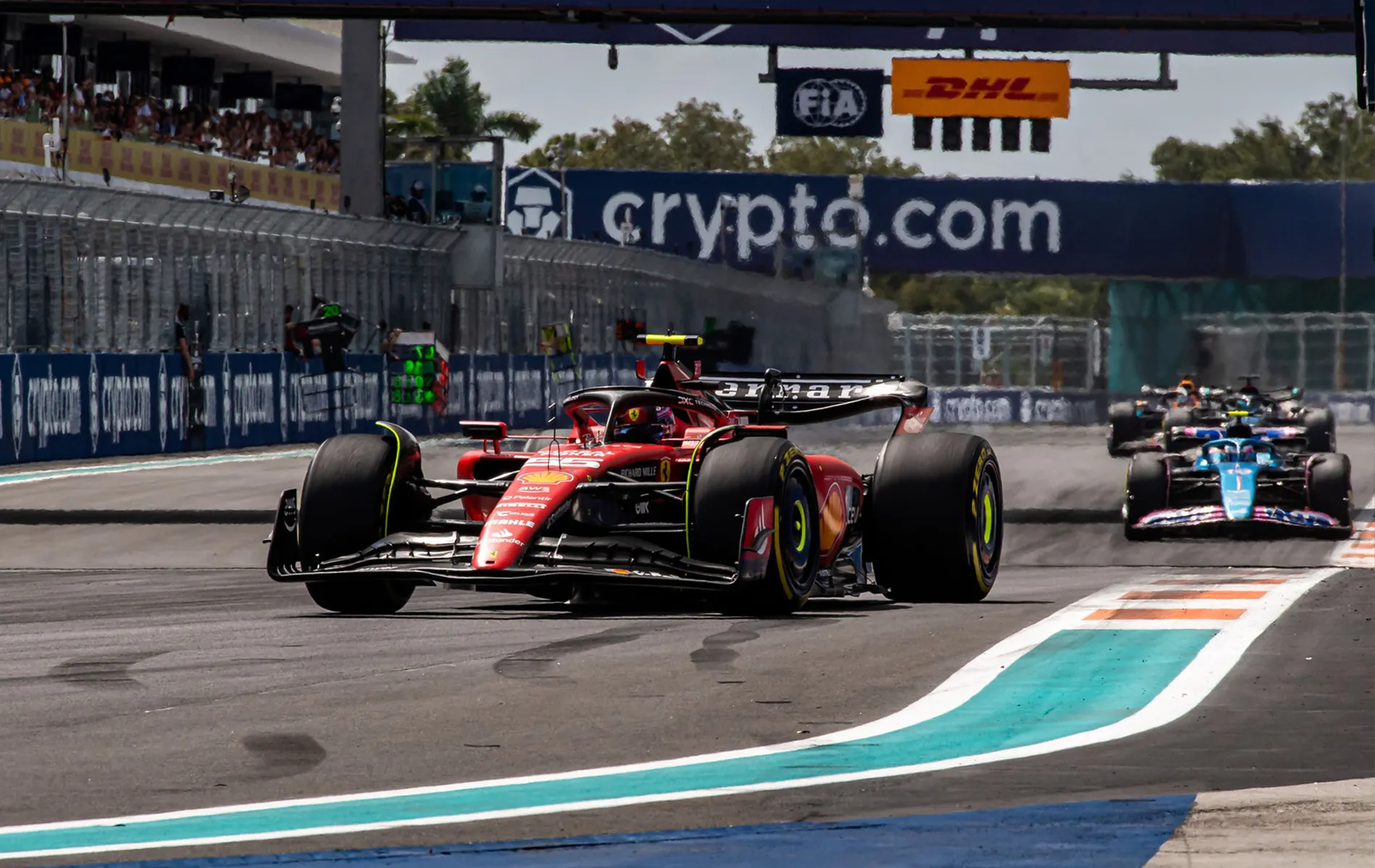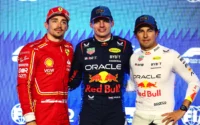Formula 1’s DRS rules have faced recent scrutiny again due to reduced DRS zones hindering overtaking. However, a straightforward alteration could elevate the racing experience for fans and drivers alike.
Even with F1’s innovative regulations designed to enhance the aerodynamic performance of next-gen F1 cars and aid the drivers on the offence, the Drag Reduction System (DRS) remains controversial.
Introduced in 2011, DRS operates with a straightforward principle: the rear wing’s component opens to minimise drag when a pursuing driver is within a second of the car ahead. This creates competitive moments during braking zones and on straights.
Regrettably, DRS-powered overtake manoeuvres have become commonplace. The system often allows racers to breeze past competitors, rendering spontaneous and bold overtaking manoeuvres infrequent.
Vehicles with superior aerodynamics, such as the Red Bull RB19, gain added advantage from the drag reduction upon DRS activation. This was evident with drivers like Max Verstappen and Sergio Perez, especially on faster tracks like the Australian and Azerbaijan Grand Prix. The FIA’s attempt to mitigate DRS dominance by shrinking DRS zones inadvertently hindered even basic overtakes.
The question arises: should F1 persist with diminished DRS zones and compromise the racing entertainment or reintroduce extensive DRS zones, potentially favouring teams like Red Bull?

For 12 years, the rulebook for DRS hasn’t seen modifications. Instead, F1 has tried rectifying aspects that weren’t problematic, like the Saturday qualifying. Tweaks to DRS could infuse fresh excitement into the Grand Prix.
Transform DRS into a time-limited boost usable at anytime
Currently, the DRS system activates after two racing laps at the start of a Grand Prix or after a Safety Car returns to the pits, aiding those within one second of the car in front to unlock increased speed.
The prevalent issue is that the lead car has limited countermeasures other than depleting its energy reserves, a move that can only be executed a couple of times.
A solution could be to open up DRS usage for anyone at any time but with a time cap.
Drawing inspiration from IndyCar’s push-to-pass approach, providing cars with a defined DRS duration during the race can introduce a new layer of strategic gameplay.
Hypothetically, each car receives 200 seconds of DRS time throughout the Grand Prix, applicable under all standard race conditions and expanding DRS zones to encompass all straights (ones that are safe) to ensure maximised use for drivers.
The challenge would be preserving the DRS until crucial moments, making early race advances a strategic risk. Defenders could counterattack using their DRS, making effortless overtakes rare.
Drivers might opt for an early position advantage, making them susceptible later, while others might use DRS to maintain a steady pace. The visual DRS cue, such as an open rear wing, adds another tactical layer, as opponents can react based on visible DRS activations.
Overtakes would be considered, perhaps requiring multiple preparatory laps, as teams closely monitor remaining DRS durations. Alongside energy usage tactics, this ensures even DRS-assisted moves demand finesse and strategy, not just an easy bypass.
Ultimately, after the 200-second is depleted, the race reverts to its essence: a test of a driver’s skill in navigating past competitors without any aids.
Seen in:










